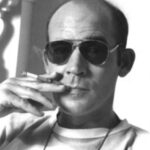PBS seems to be in a permanent state of fundraising. One positive byproduct of this is public television does help us remember our history and heritage. For example, PBS has recently been showing clips from “Ed Sullivan’s Rock and Roll Classics” as an instrument of its fundraising efforts.
Sullivan was rewarded handsomely for tapping into the baby boomers’ rock revolution of the 1950s and 1960s. He introduced the Beatles to America in February 1964. According to the DVD “The Four Complete Historic Ed Sullivan Shows Featuring the Beatles,” 73 million viewers tuned in that winter night to watch the Beatles, the largest audience for any show in TV history up till that point. The Beatles made a total of four live appearances on the Sullivan variety show, performing 20 songs, seven of them number one hits. Sullivan helped usher in Beatlemania and the British Invasion, while the British acts in turn helped keep Sullivan’s ratings high. His show was broadcast from 1948 to 1971, and during the last decade of his show it was the rock acts that helped him to be renewed each year.
Another Sullivan contribution was breaking down racial barriers. Sullivan defied the conventions of the time and eagerly had Motown artists and other R & B and soul acts on his show. The Supremes, for instance, appeared 17 times on the Sullivan program. The Jackson Five, The Temptations, The Four Tops, Smokey Robinson and the Miracles, Stevie Wonder, and James Brown were other giant Motown or soul acts Sullivan brought onto his stage. Not only this, but Sullivan greeted these artists warmly in an era when Petula Clark even innocuously touching the arm of Harry Bellafonte caused quite a ruckus.
The songs delivered in live performances on the Ed Sullivan Show were often abbreviated and watered-down versions of the 45-rpm singles that the bands and acts had released. Still, even with these restrictions, the who’s who of rock and pop music readily agreed to appear on the Sullivan show.
Sullivan certainly had his limitations. He was forgetful and inarticulate, and he could be quite spiteful and dictatorial. He banned the Doors and Bo Diddley from his show because they would not modify their performances to conform to Sullivan’s requirements.
Although PBS is using these Sullivan classics to appeal specifically to baby boomers in their fundraising drive, other generations can view these shows and learn about a time gone by. Even the variety show genre itself is now a relic. It was a staple on television for many decades, but it thrived when there were only three major networks and maybe a couple local channels. In order to see the Rolling Stones or the Dave Clark Five, a teenager might squirm through an opera singer that appealed to her mom, a comedian that amused her dad, and a clown or circus act that captivated her younger sibling. But with the advent of cable television in the late 1970s and 1980s, the teen could now tune in to MTV or VH1 to rock out, and there was no need to sit through a variety show waiting for “the good parts.”
PBS is creating a win-win situation in showing these clips from the Sullivan show. They are hopefully bringing back fond memories and coaxing people to send in contributions. But PBS is also keeping alive our history at a time when there is almost no appreciation of the past.
Sources:
“The Four Complete Historic Ed Sullivan Shows Featuring the Beatles,” DVD, SOFA Entertainment Inc., 2003


